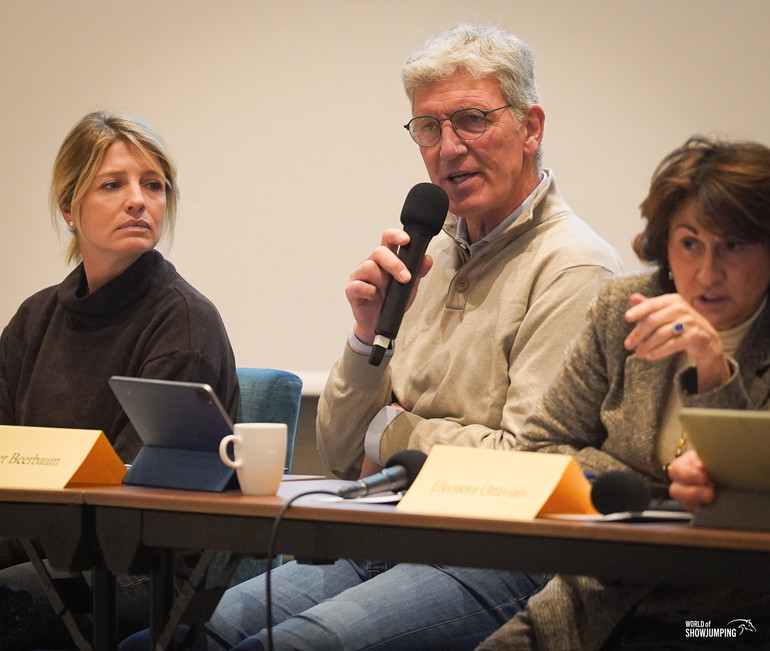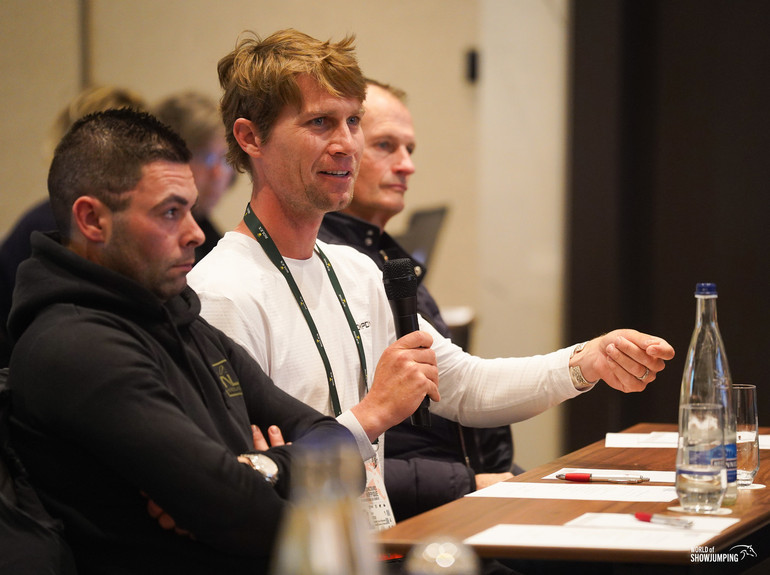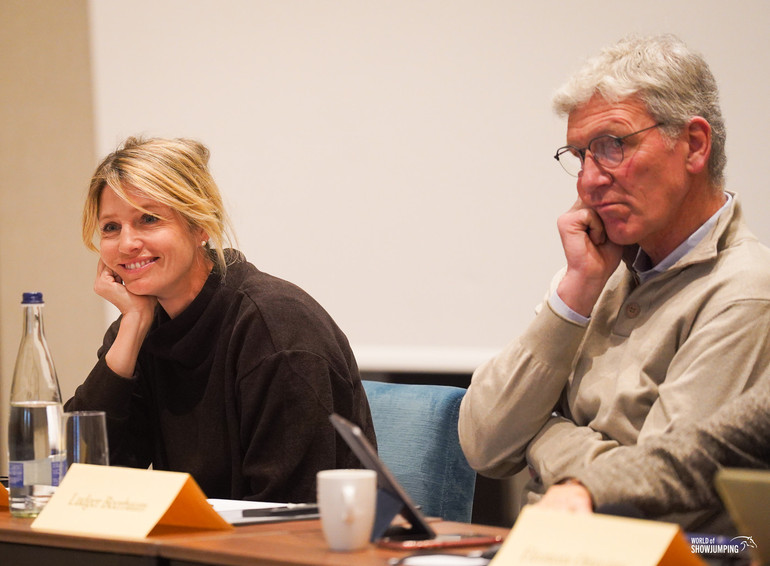Text © World of Showjumping
During CHI Geneva, the International Jumping Riders Club (IJRC) held their 2024 General Assembly. On 13 December, IJRC representatives – IJRC President Francois Mathy Jr., IJRC director Eleonora Ottaviani and IJRC board members Tiffany Foster, Ludger Beerbaum, Steve Guerdat, Richard Vogel and Kevin Staut – met with riders, owners and FEI representatives at the Marriott Hotel in Geneva.
On the agenda were reports from the FEI Jumping Committee and the FEI General Assembly 2024, as well as the FEI Rules Revision-timeline, the Olympic format for 2028, the approved ranking proposal from the Longines Ranking Working Group, and the FEI TackApp.
However, much of the discussion circled around the new FEI measuring device for noseband tightness, the increase in FEI registration fees, as well as out-of-competition testing and whereabouts information for horses – all part of the FEI rules coming into effect 1 January, 2025.
FEI Rules Revision deadlines
The FEI Jumping Rules will go through a full revision in 2025, giving national federations and stakeholders with whom the FEI has signed an MoU an opportunity to propose changes until 1 March. In June, the FEI will provide the first draft and stakeholders are given eight weeks to comment before the final draft is circulated in October. The proposal will be discussed once more during the rules session at the FEI General Assembly in Hong Kong in November before a vote there.
If there are rules you don’t like, you have to inform us
- Eleonora Ottaviani -
Any suggested changes should be communicated to the IJRC before 1 February 2025.
“Next year [there] is a full revision of [the] jumping rules, [which] happens every four years, so any proposal[s] we need to make, we need to make now actually,” IJRC President Francois Mathy Jr. pointed out, while IJRC Director Eleonora Ottaviani added: “If there are rules you don’t like, you have to inform us, because we have to prepare the proposals for the FEI before the 1 of March.”
FEI registration fees
The increased FEI registration fees were discussed as well. Approved by the General Assembly, and applicable from January 1 2026, the registration fee for athletes will be increased from CHF 10 to CHF 55, while the registration fee for horses will go from CHF 25 to CHF 55.
Los Angeles 2028
While the Olympic format was addressed shortly, the weather at the allocated venue for the Olympic Games 2028 in Los Angeles was highlighted.
It is so hot – like really hot
- Karl Cook -
“We were talking about this during the Games this year, and so I was curious and I brought up the weather for Temecula during the Games while we were there in Paris,” Karl Cook said. “And over the two weeks, the coldest day was 38 [Celsius] – the coldest. We could say we do it at night, but at 9 PM, it is 35 – you have to do it at 1 in the morning, [but] you want people to come? Who is coming at 1 in the morning. It is so hot – like really hot,” Cook pointed out – with reference to the welfare of the horses.
Out-of-competition testing and whereabouts information for horses
Out-of-competition testing and whereabouts information for horses are included in the updates that are a result of the full revision that the FEI EADCMRs (Equine Anti-Doping and Controlled Medication Regulations) has gone through in 2024. In the EADCMR article 5.5.1 it is stated that: “The FEI shall be entitled to request Registered Trainers, Owners of the Horses and/or Persons Responsible to provide whereabouts information about their Horse(s). - - “
I think we are looking for conflicts, where we don’t have a problem
- Ludger Beerbaum -
Jumping Director Todd Hinde explained this further, pointing out that any procedures will first be rolled out in the discipline of endurance, while the timeline for jumping is still unclear. “Regarding the out-of-competition testing, yes, it is only for banned substances and the protocol there is that we will start with endurance,” Hinde said. “We are unsure yet of when it will come into jumping, that could be four months, that could be two years – we don’t know the exact line when that will start in jumping yet.”
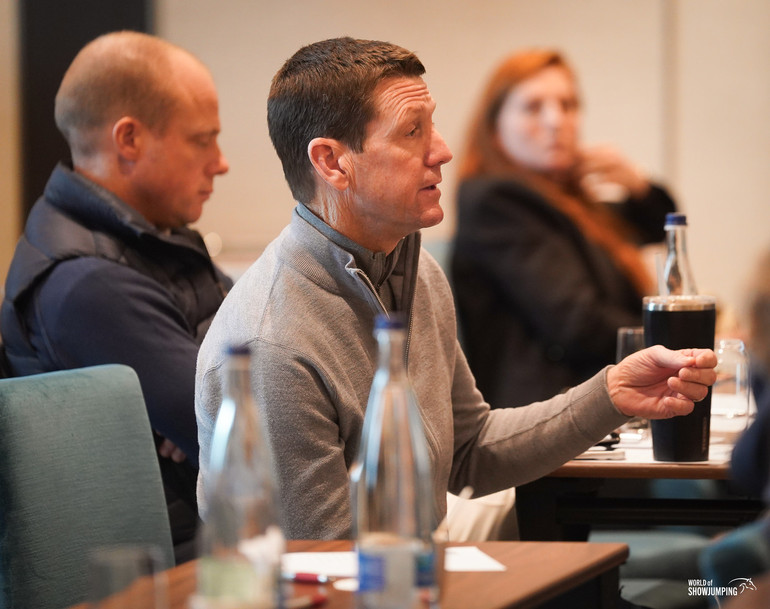 “I think when we look at the obstacles for development – developing young riders in our sport or up-and-coming athletes – it’s another cost that just becomes also astronomical in your organization, and it’s not so simple,” Mclain Ward said about the excessive administrative effort that whereabouts information for horses will create.
“I think when we look at the obstacles for development – developing young riders in our sport or up-and-coming athletes – it’s another cost that just becomes also astronomical in your organization, and it’s not so simple,” Mclain Ward said about the excessive administrative effort that whereabouts information for horses will create.
Mclain Ward highlighted the excessive administrative effort that whereabouts information for horses will create. “When I look around this room and we talk about the FEI wanting to promote development of our sport, young riders in this room, the added cost that it’s going to take an operation to just put out this information, the research and then to log it – I mean, you're talking about hiring possibly one to two more staff members administratively just to be able to try to stay up to date with the requirements,” Ward pointed out.
You're talking about hiring possibly one to two more staff members administratively just to be able to try to stay up to date with the requirements
- Mclain Ward -
“I think when we look at the obstacles for development – developing young riders in our sport or up-and-coming athletes – it’s another cost that just becomes also astronomical in your organization, and it’s not so simple,” he continued. “I know for myself and most of us who have been on the testing pool for USADA and WADA for many years. I mean, I have one person that basically handles that in my organization. It's a lot of work and it's just another obstacle for the developing youth of our sport from a cost point of view. [It has] Nothing to do with horse welfare; we of course are supporting that and fair play. But I think you have to take it into account; the additional requirements and personnel that it's going to take to make that happen in everybody's operation.”
“I would really like to understand the practical approach to this,” Ludger Beerbaum asked Todd Hinde. “Why are we doing this? Do we really think there is a horse welfare issue in the dark, between competitions, because horses are treated with banned substances? Or are we just doing this to show the outside world how clean and how good we are? I think we are looking for conflicts, where we don’t have a problem."
“We have never done in-between competition [testing] until now, so it's a way for us to protect our sport and protect ourselves,” Hinde answered.
FEI noseband measuring device
The use of the FEI noseband measuring device – which as per the FEI Veterinary Regulations article 1044.8 will come into effect 1 May 2025 – raised many concerns among the riders, with Ludger Beerbaum sharing how he believed the device to be a joke when he first heard of it.
“To be honest, I thought it was a joke – and I was really sure that in one year, we will not talk about it anymore. And now here we are,” Beerbaum said.
I don’t think the mechanism is the issue; the protocol is the issue
-Tiffany Foster -
Beerbaum reflected on the use of nosebands, highlighting that they are being used “(…) to make sure that our aids to the horse's mouth are coming in the right doses, so we end up in a good control, with good connection.”
“The goal of a noseband is to be productive; to support the horses and the riders to have a better connection,” Beerbaum said. “And therefore, we need a well-fitted, well-fixed noseband, and not a lose one where you put a tool in and find another way to come up with a yellow card. This is totally nonsense. I really think, where are we?”
“I don’t think the mechanism is the issue; the protocol is the issue – if you're going to have every single horse tested with this thing before and after the competition,” Tiffany Foster weighed in. “The point is, I don't actually think the tool is the problem because if you get into a discussion with a steward – I think my noseband is loose enough and they think it's too tight – I think it is good to have something that's regulated. Can it not just be done if there is an issue, a discussion? Does that not make a little more sense,” she asked, receiving a round of applause from her colleagues in the room.
“Unfortunately, this was never an issue in the TackApp group, and this is also something where I criticize the protocol of establishing this toy, which started with a joke for Ludger, and now it's here,” Max Kühner shared. “It should have been also regarded in a technical view; therefore, we have the TackApp Group and it hasn't showed up there the whole year. I think this is something where I'm a little bit worried that something goes – if it's wanted by the FEI – it goes the way in which it goes through, but not the way it should.”
I think we are cutting a little bit the tree we are sitting on
- Ludger Beerbaum -
FEI Jumping Committee Chair Stephan Ellenbruch – who attended the meeting via video call from Riyadh (KSA) – expressed his understanding as to the concerns. “I was in contact over the last weeks with lots of the top stewards and they are also addressing their concerns,” he said.
“So, there are serious concerns from all parties, and I have a certain feeling we should have another round of discussions about that,” Ellenbruch said. “We will not be able to delay this significantly, we will not be able to change the rule – because this is an approval of the General Assembly – so we have to live with the rule, but I really think we should all sit and discuss it at least with the jumping riders, with the dressage riders, to find a compromise about the procedure. That is the minimum we should try to achieve, and I know that I won't be too popular inside the FEI with this proposal, but I'm listening to these concerns now for long enough and I guess something has to happen. And as we have a little bit of time, if we do that at the beginning of the year, at least we can make it better than it is at the moment.
“I think we are cutting a little bit the tree we are sitting on,” Beerbaum concluded the discussion on the FEI measuring device. “If we continue like this, I will come here in five years with more grey hair and bigger glasses, and we will be talking about not having a bridle anymore, talking about [riding with] a rope around the neck – this is the beginning of the end.”
19.12.2024 No reproduction of any of the content in this article will be accepted without a written permission, all rights reserved © World of Showjumping.com. If copyright violations occur, a penalty fee will apply.



